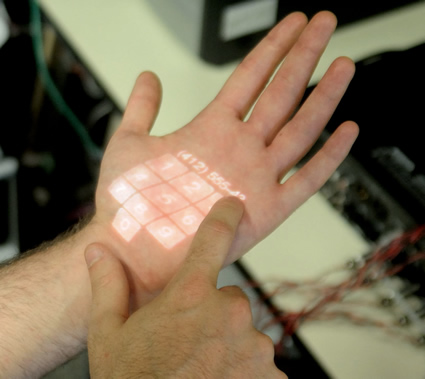Skin Tapping Input

Tapping your forearm or hand with a finger could soon be the way you interact with gadgets. A new technology created by Microsoft and Carnegie Mellon University uses 'body acoustics' to turn skin into an interactive input device.
The continual shrinking of Gadgets is limited by the size of human fingers and the need to interact with the gadgets. An input system such as this one (with some refinement on the size of the armband) may be able to overcome these limitations.
The video explains how it all works.
There is a lot more information on the system developers website at: